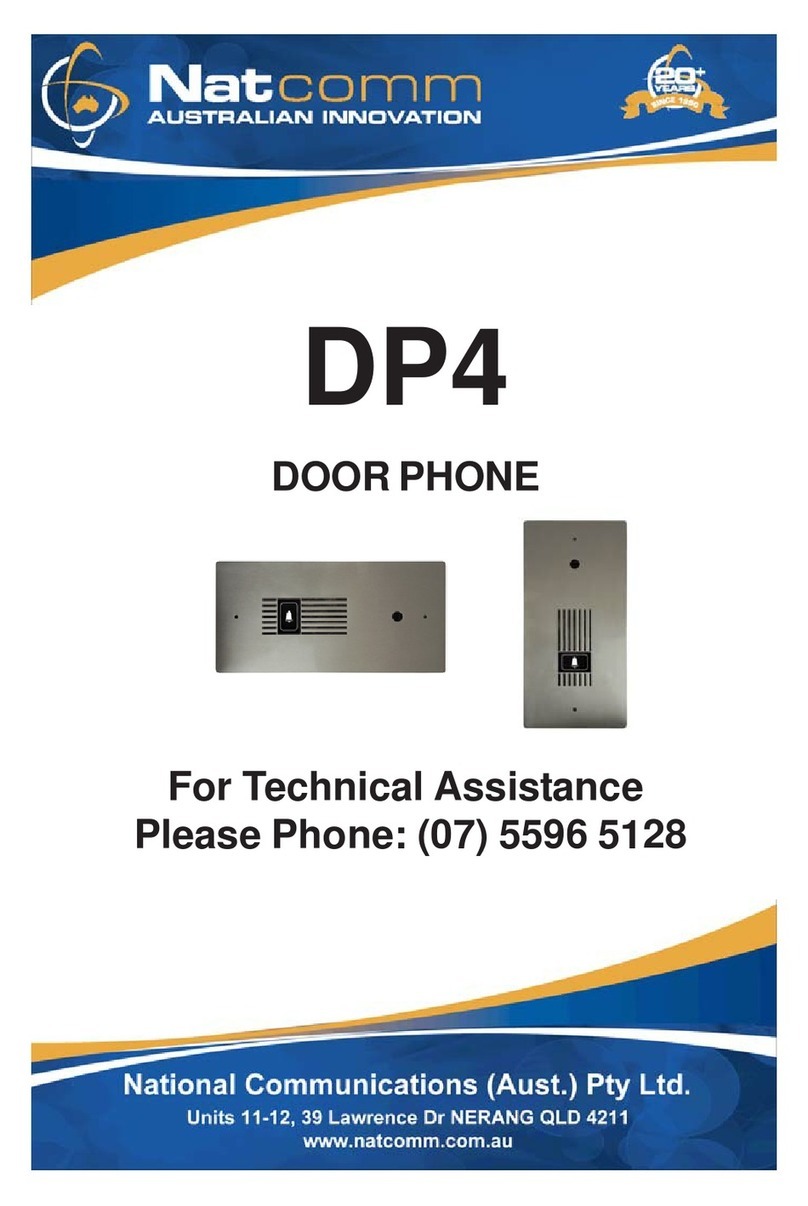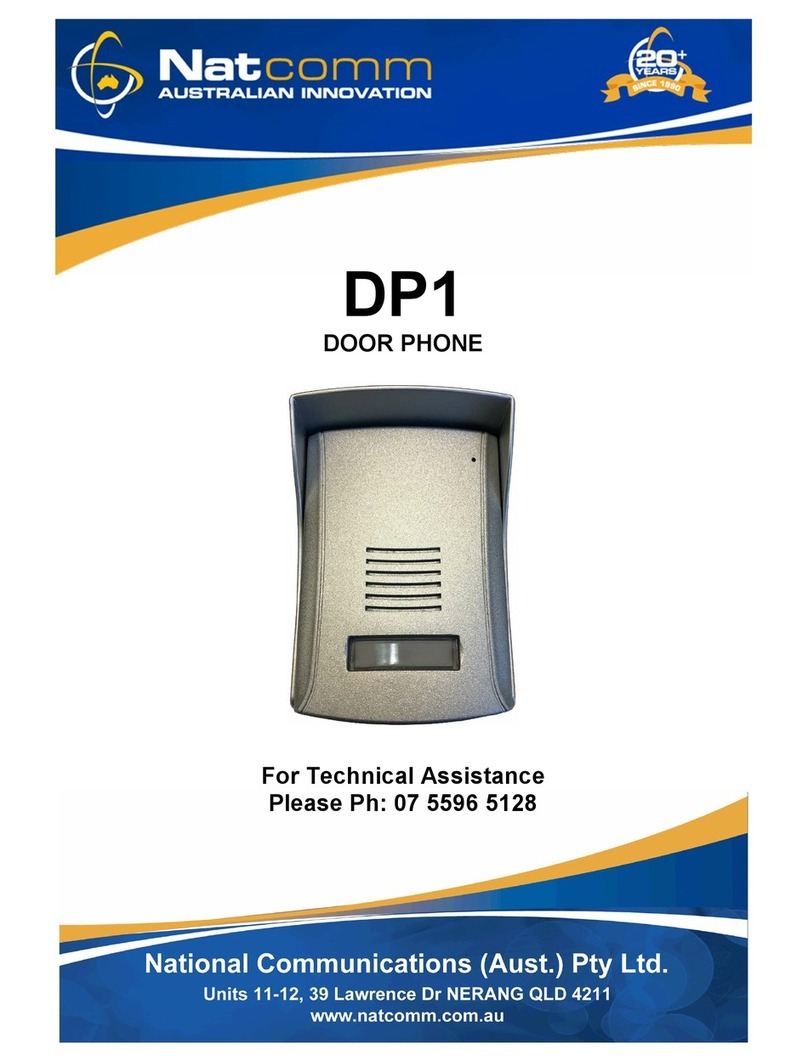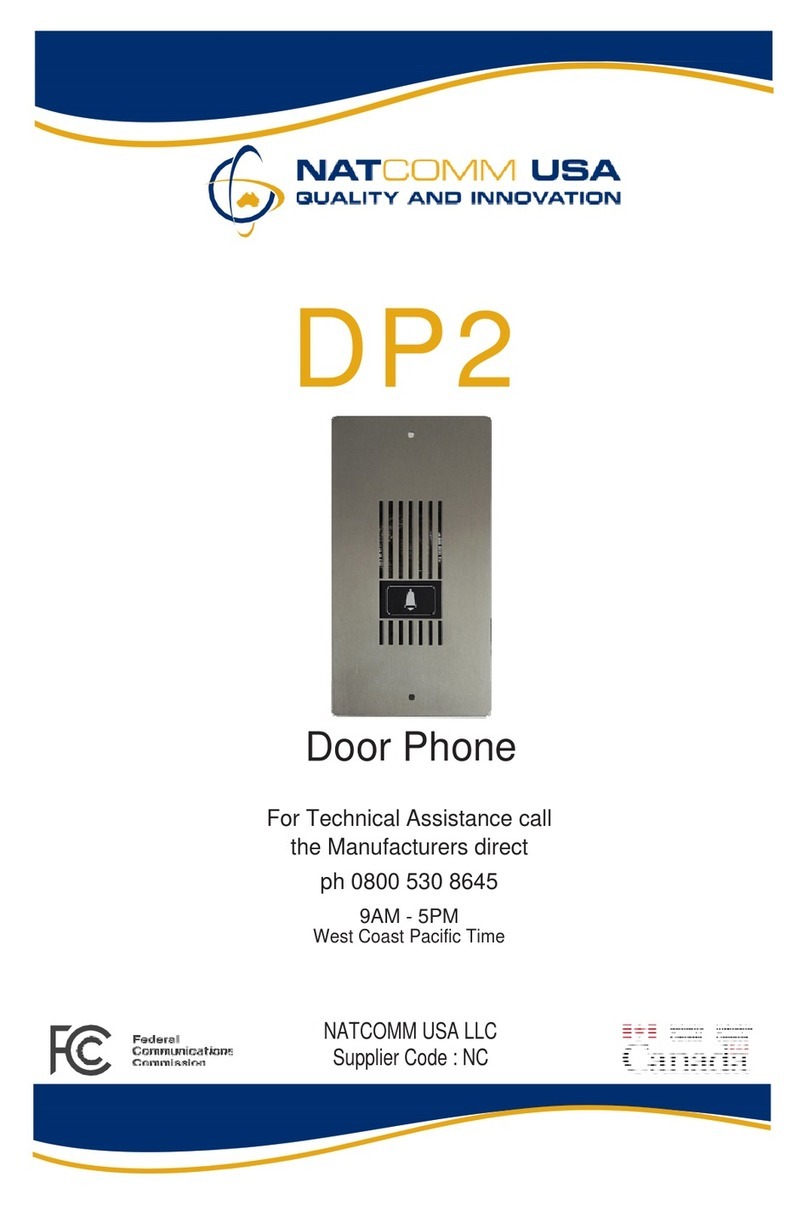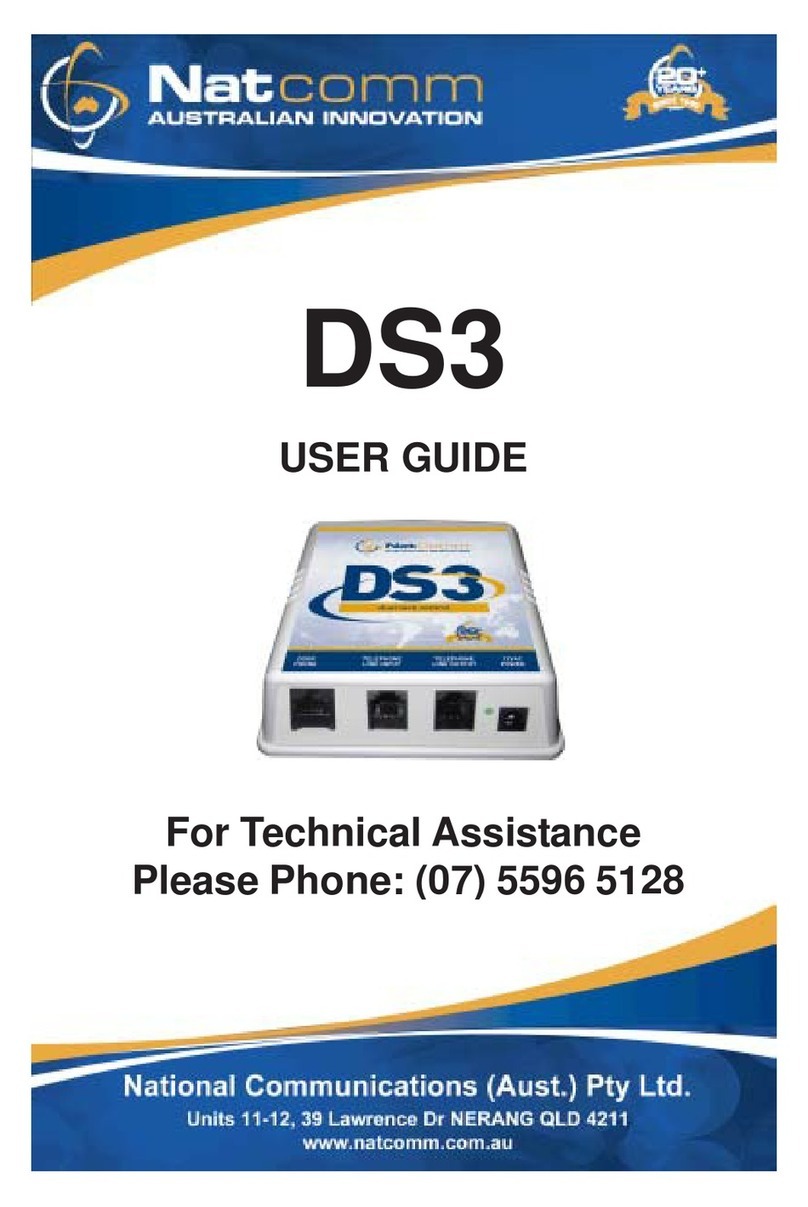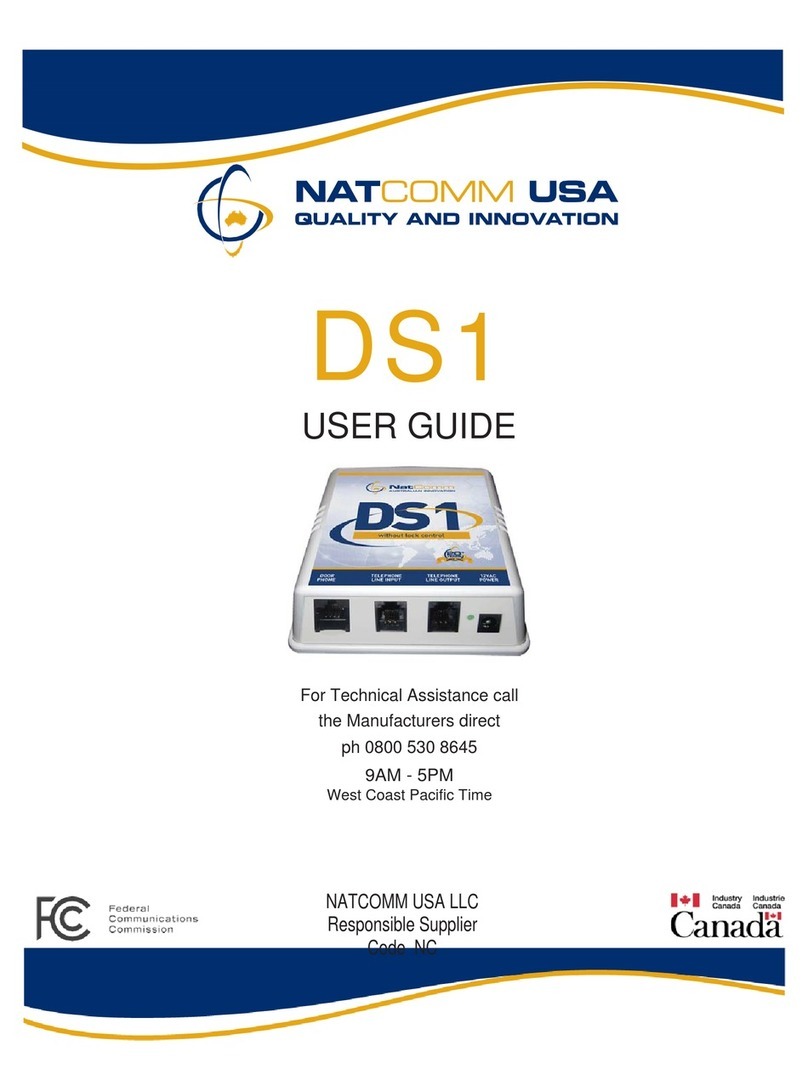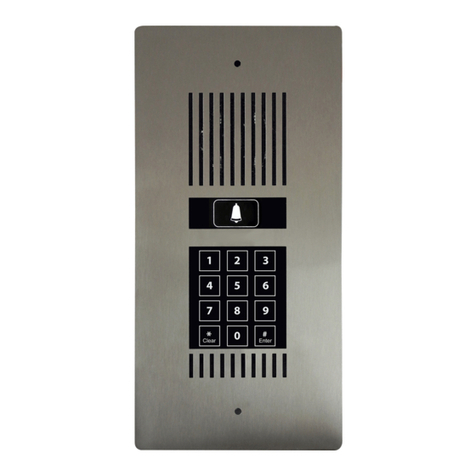
Page 4 Natcomm
DOOR PHONE RANGE
A choice of Five Door Phones is provided for use with our range of Door Station Controller units:
Model DP1 - SURFACE MOUNT
Molded plastic unit, designed for easy surface mounting
direct onto your wall surface.
Blue LED Night illumination. (100mm Wide, 133mm High, 32mm Depth).
Model DP2 - FLUSH MOUNT Compact Size
Marine Grade Stainless Steel face plate.
Touch Switch operation.
Available in Vertical (displayed) or Horizontal orientation.
Blue LED Night illumination.
Optional Surface Mounting Kit is available.
(107mm Wide, 204mm High, 30mm (D).
Model DP3 - FLUSH MOUNT Standard Size
Marine Grade Stainless Steel face plate. Vertical or Horizontal.
Fitted with a Sealed Perspex Camera Hole and rear Mounting Studs
to allow you to fit your own Camera.
Touch Switch operation.
Blue LED Night illumination.
Optional Surface Mounting Kit is available.
(130mm Wide, 264mm High, 37mm Depth).
Model DP4 - FLUSH MOUNT Standard Size
Fitted with a high resolution, low light Digital Colour CCD
Camera. BNC output.
Available in Vertical (displayed) or Horizontal orientation.
Marine Grade Stainless Steel face plate.
Touch Switch operation.
Blue LED Night illumination.
Supplied with Wall Mount Box to assist installation.
Optional Surface Mounting Kit is available.
(130mm Wide, 264mm High, 37mm Depth).
Model DP5 - FLUSH MOUNT Standard Size
Fitted with intelligent Pedestrian Access Keypad.
Touch Switch operation with 99 User Codes.
Available in Vertical (displayed) or Horizontal orientation.
Marine Grade Stainless Steel Face plate.
Blue and White LED Night illumination.
Supplied with Wall Mount Box to assist installation.
Optional Surface Mounting Kit is available.
(130mm Wide, 264mm High, 30mm Depth).
